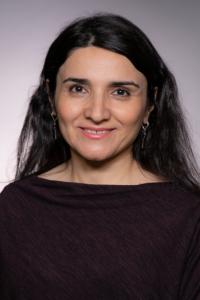Improving Dystonia Diagnosis in Cerebral Palsy
CP Research Network’s Paper Published in Neurology Clinical Practice
Dystonia is a movement disorder that causes involuntary muscle contractions and is estimated to affect up to 80% of people with cerebral palsy (CP). However, it is often missed during routine clinic visits, leading to delays in diagnosis and treatment. To address this gap, the Cerebral Palsy Research Network’s Dystonia Working Group launched a quality improvement project to improve how dystonia is identified in clinical care.
Their findings were recently published in Neurology: Clinical Practice in a paper titled Multicenter Improvement in Screening for Dystonia in Young People With Cerebral Palsy. This is the group's first publication focused on improving dystonia screening. Linn Katus, DO, MSc, a neurologist and movement disorders specialist at the Weinberg Family Cerebral Palsy Center, is a co-author and active member of the CP Research Network Dystonia Working Group.
The study looked at how more consistent screening and documentation helped doctors at four hospitals better recognize dystonia in young people with CP. As a result, they found the number of individuals with CP receiving a diagnosis of dystonia increased from 57% to 74%. This approach suggests that similar screening methods could be adopted at other sites across the country to identify individuals with dystonia more quickly.
The CP Research Network Dystonia Working Group brings together healthcare providers and researchers from across the U.S. to share strategies for better identifying and managing dystonia in people with CP. Their ultimate goal is to improve recognition and treatment, leading to better quality of life for those affected.
References
https://www.neurology.org/doi/10.1212/CPJ.0000000000200469
Bhooma Rajagopalan Aravamuthan, Emma J. Lott, Esra Pehlivan, Keerthana Chintalapati, Deborah Grenard, Desiree Roge, Rose Gelineau-Morel, Dante Kyle, Christie Becu, Michael C. Kruer, Linn Katus, Paul, and Amy for the Cerebral Palsy Research Network



